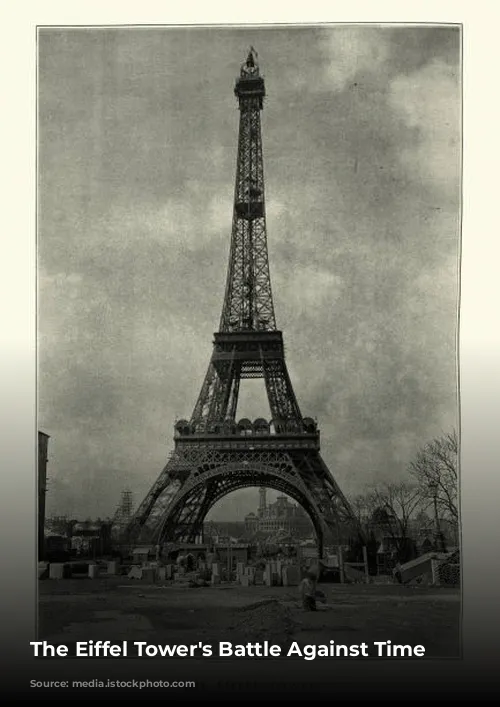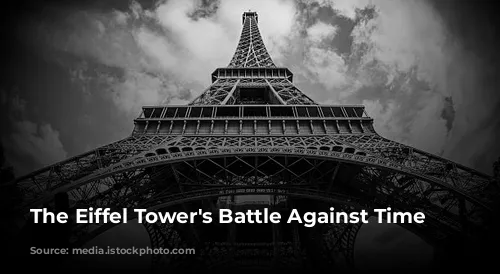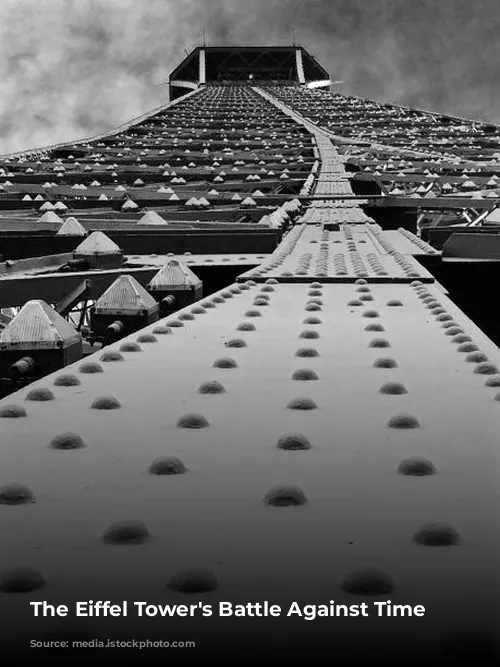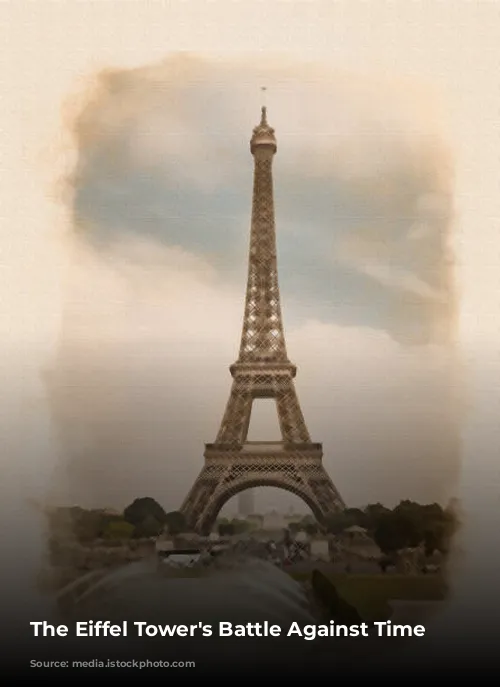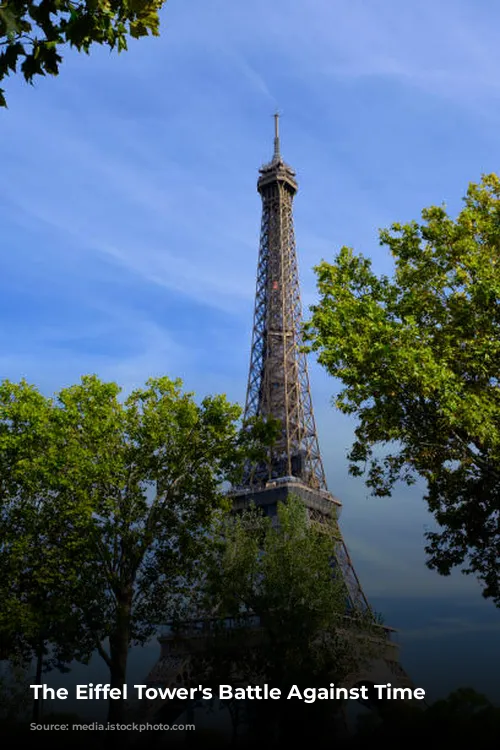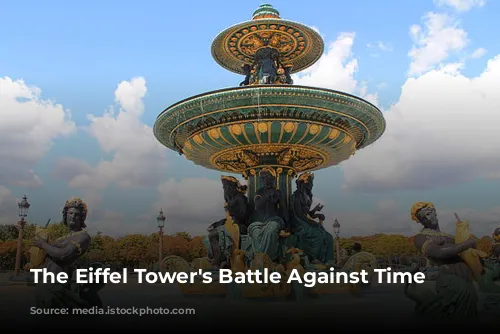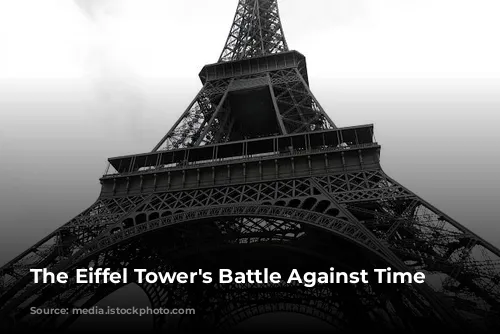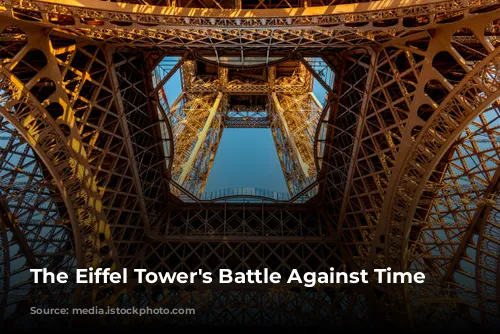The Eiffel Tower, a symbol of Paris and a marvel of engineering, stands tall against the backdrop of history. It has witnessed momentous events, from the World’s Fair of 1889 to two World Wars. But the greatest threat to its enduring presence is not war or occupation, but the relentless assault of rust.
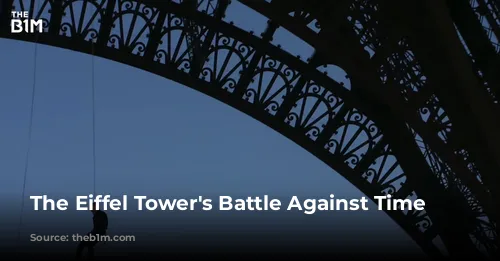
A Monument’s Struggle
The Eiffel Tower was initially conceived as a temporary structure, meant to grace the 1889 World’s Fair for a mere 20 years. However, its enduring beauty and engineering prowess earned it a permanent place in the hearts of Parisians and the world. Now, over a century later, it stands as a testament to Gustave Eiffel’s visionary genius.
However, the tower is not immune to the ravages of time. Its iron frame, once a symbol of strength, is now showing signs of wear and tear. The iconic red-brown hue hides a growing concern: rust is creeping through the structure, threatening its very existence.

A Costly Battle Against Rust
Ideally, the tower should be repainted every seven years to protect it from the elements. Sadly, the last restoration effort was delayed due to the pandemic, leaving the tower vulnerable to the relentless attack of rust. The current $64 million repaint is an attempt to restore the tower’s appearance for the 2024 Paris Olympics. But some experts are deeply concerned that this is merely a cosmetic fix, failing to address the underlying problem of rust that has infiltrated the tower’s framework.
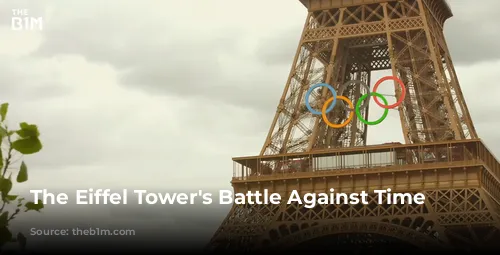
A Visionary’s Legacy
Gustave Eiffel, the genius behind the iconic structure, anticipated the threat of rust. He meticulously planned for its prevention, but his primary concern was to convince the Parisians to keep his monument standing.
Eiffel’s vision was born from the desire to showcase France’s engineering prowess during the 1889 World’s Fair. His revolutionary design, a towering marvel of 1,000 feet, defied the limitations of the time, surpassing even the Washington Monument in height.
Eiffel’s genius was evident in every aspect of the tower’s design. He ingeniously used lightweight yet strong iron to create a towering structure that wouldn’t sink under its own weight. He carefully considered the wind’s impact, incorporating a unique shape that ensured the tower’s stability against strong gusts. This ingenious design, inspired by the natural resilience of great trees, with its distinctive curves, allowed the tower to weather the storms.
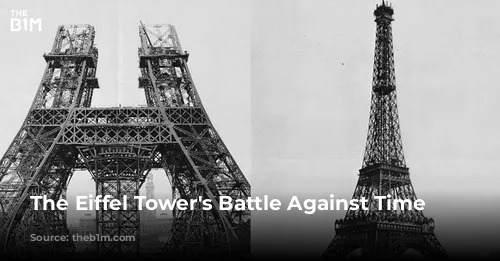
A Monument’s Transformation
The Eiffel Tower’s journey from a revolutionary design to a beloved landmark was not without its challenges. Initially, the tower faced criticism and disapproval from the Parisians, who found its bold silhouette jarring and offensive. They deemed it a “truly tragic street lamp” and a “half-built factory pipe.”
However, the tower’s appeal grew rapidly, attracting millions of visitors in its first six months. It quickly became a worldwide icon, defying its initial critics.
Despite its initial success, the tower was slated for demolition in 1903. However, Eiffel’s ingenuity and foresight saved his monument from destruction. He championed the tower’s scientific potential, highlighting its use for meteorological observations and wireless telegraphy. The tower’s strategic value during wartime cemented its importance, and it continues to play a vital role in television and radio broadcasts.

A Looming Threat
In recent years, a series of reports have revealed alarming signs of decay within the Eiffel Tower. Cracks and rust have been found throughout its structure, with only a small portion of the new paint successfully adhering to the iron frame.
The current $64 million repaint may exacerbate these issues, leading to further corrosion and potentially endangering the tower’s structural integrity. While the operating company hesitates to close the tower for extended periods due to the loss of revenue, the future of this iconic landmark hangs precariously in the balance.
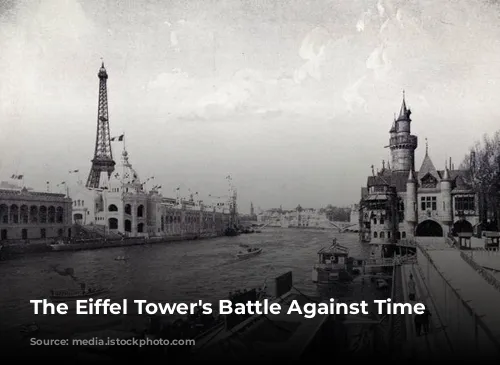
A Call to Action
The Eiffel Tower is more than just an observation tower, an antenna, or a symbol of a long-ago exhibition. It’s a testament to human ingenuity, a landmark that has transcended its initial purpose. It stands as one of the world’s most recognizable structures, forever etched in our collective imagination.
The future of the Eiffel Tower rests in the hands of those who cherish its legacy. This $64 million repaint is not a solution, but a temporary band-aid. If we fail to address the underlying threat of rust, we risk losing this magnificent symbol for generations to come.
The Eiffel Tower is a reminder that even the most enduring monuments need constant care and attention. Its legacy hinges on our commitment to preserving this iconic symbol of human ingenuity and artistic expression. We must act now to ensure that its beauty continues to inspire awe for centuries to come.
